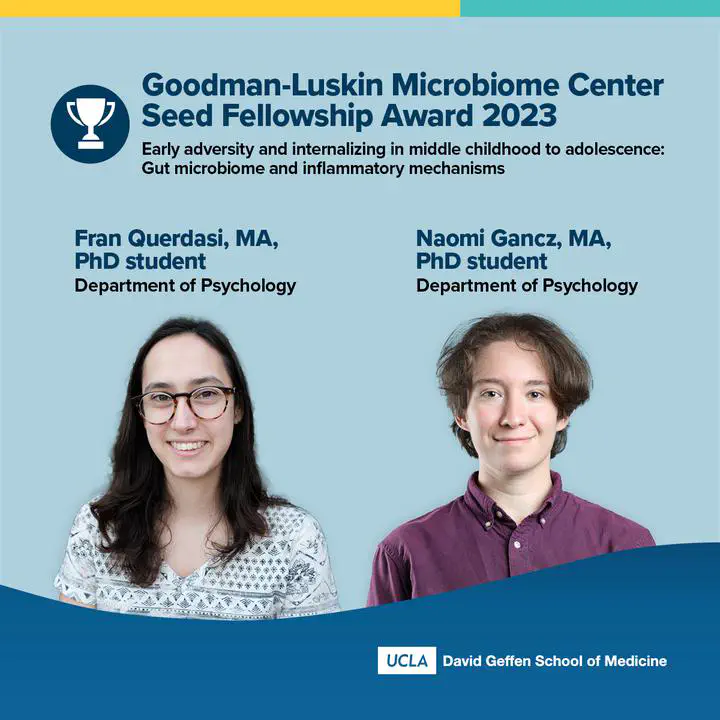Caregiving Adversity & Internalizing Symptoms in Youth - Role of Gut Microbiome Functional Potential

Context: My colleage, Naomi Gancz, and I were awarded a seed fellowship from the UCLA Goodman-Luskin Microbiome Center (GLMC) to support work related to my dissertation. As part of the fellowship, we were invited to give a talk at the GLMC 2024 Symposium on our preliminary results.
Event: UCLA Microbiome Center 2024 Symposium
Location: Los Angeles, CA, USA
Authors: : *Naomi Ganz, *Francesca Querdasi, Jennifer Labus, Kristen Chu, Emily Towner, Eason Taylor, Bridget Callaghan
*indicates co-first authors
Talk Abstract:
The gut microbiome is a potential mechanism linking exposure to early caregiving adversity (CA) with elevated risk for internalizing (i.e., depression and anxiety) disorders. Important questions remain surrounding when in development this relationship emerges and the specific features of the gut microbiome involved. In the present study, we address these gaps in the literature using a sample of N = 125 youth aged 6-16 years, an important developmental period for emergence of internalizing symptoms. Roughly half of the sample were exposed to time-limited CA (maltreatment and caregiving instability); the other half were not and served as the comparison group. Youth donated a stool sample, and a caregiver answered questionnaires on children’s internalizing symptoms, as well as on incidence of physical symptoms that are often comorbid with internalizing disorders (gastrointestinal distress and fatigue). Following shotgun metagenomics sequencing of DNA extracted from stool, we performed functional annotation of the metagenome with HUMaNn3. We conducted hypothesis-driven analyses testing links between adversity and pathways involved in short-chain fatty acid and aromatic amino acid synthesis based on findings from related rodent and human literature, and explored associations with all superpathways, using linear modeling with Maaslin2. We found that CA-exposed youth had lower microbial potential for superpathways involved in synthesis of amino acids L-threonine and L-methionine which have possible psychobiotic effects as precursors for serotonin and short-chain fatty acid synthesis, and higher potential for heme b synthesis from glycine. These results are in accordance with prior research on adversity exposure in adults. None of the CA-associated pathways were significantly related to symptom measures. Interestingly, however, we found several interaction effects of CA history and superpathways on internalizing and fatigue symptoms, such that the correlation between symptom levels and microbiome pathways was more positive for the adversity group than for the comparison group, suggesting that gut-brain communication may be altered in ELA-exposed compared to unexposed youth. Future research will integrate compositional analyses on the species level and examine longitudinal change in the gut microbiome according to CA and symptoms.
Poster: We also presented a poster on our project with the full results (we were only able to discuss a subset of the results during our talk).